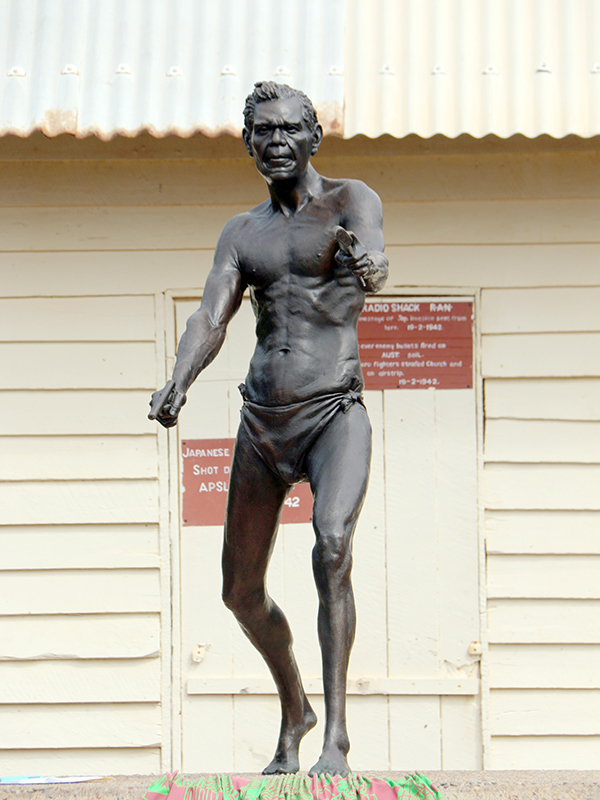Part 2 of the story of the planes over the Tiwi Islands, 1942. Fr John McGrath MSC.
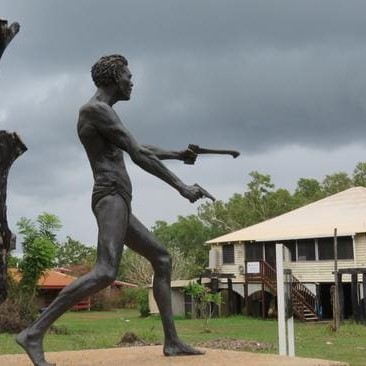
Part 1 appeared the other day, the story of Matthias Ulunguru and the capture of the Japanese pilots. This continues Matthias’ story but also the role of Fr John McGrath MSC.
The alert from Bathurst Island
The morning of Feb. 19, 1942, dawned hot and humid in Australia’s Northern Territory. Some 50 miles north across Beagle Gulf from Darwin—the region’s sparsely populated seaside capital—Roman Catholic Father John McGrath was working in a field near his mission station at Nguiu on Bathurst Island. Shortly after 9:15 the growing rumble of multiple engines drew the priest’s gaze skyward, where, through breaks in the clouds, he saw a large formation of aircraft flying toward the mainland.
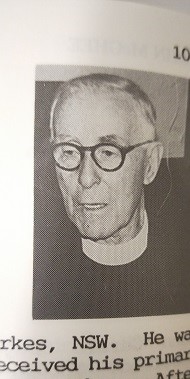
When not performing his ecclesiastical duties, McGrath served as a volunteer coast-watcher—one of several hundred military and civilian observers scattered throughout northern Australia and the South Pacific whose job it was to report sightings of potentially hostile ships or aircraft. Though the Pacific War was scarcely two months old, the Japanese had already landed in the Philippines, the Dutch East Indies and New Guinea, moved into Thailand and Malaya, and taken Hong Kong. Singapore had fallen on February 15, and most Australians believed their island nation was next on Tokyo’s list.
Unable to positively identify the high-flying aircraft, McGrath ran to a small hut built in the middle of a citrus orchard and turned on his pedal-powered radio transmitter. After anxious minutes spent waiting for the set to warm up, he sent an urgent message to Darwin warning of the incoming formation. Told to stand by, the priest wondered if war had finally come to Australia. He didn’t have to wait long for his answer, as minutes later six Mitsubishi A6M2 “Zero” fighters of the Imperial Japanese Navy swooped down from the clouds and methodically machine-gunned a civilian transport plane parked on the mission’s short airstrip.
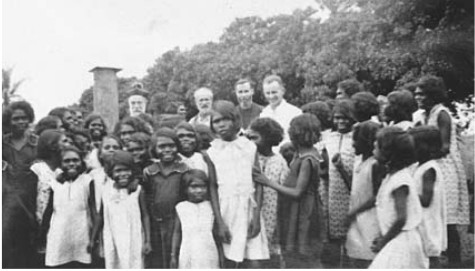
But the damage done on Bathurst was nothing compared to what was about to befall Darwin.
Though he did not know it, the planes Father McGrath saw had lifted off earlier that morning from four of the six aircraft carriers that just 10 weeks earlier had launched the devastating attack against the U.S. Pacific Fleet and military installations on Oahu, Hawaii. The 188 planes that passed over Bathurst, torpedo bombers, carrying conventional bombs—were on their way to Darwin. Less than two hours behind them was a second attack wave, 54 land-based Mitsubishi G3M2 “Nell” and G4M1 “Betty” medium bombers that had taken off from island airstrips in the Dutch East Indies.
[For a tribute to Fr McGrath, use the search engine on the Current News page and a reference to a long article by Sister Anne Gardiner OLSH will come up.]
The capture
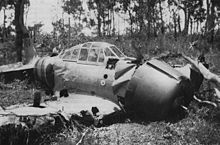
Toyoshima's crashed aircraft
Matthias Ulungura was a member of the Tiwi people, who in 1942 was living on Melville Island. On 19 February, a damaged Japanese fighter returning from an attack on an aerodrome on nearby Bathurst Island crashed near Snake Bay on Melville Island. The Japanese pilot, Hajime Toyoshima, survived the crash, but Ulungura crept up behind him, surprising him with a tomahawk, and took him prisoner. In Ulungura's words:
"I walked after him and grabbed his wrist near gun. He got proper big fright. I take revolver from his right side near his knee. Then I walk backwards pointing gun, I say "Stick 'em up, two hands, no more holding hands on head." Matthias Ulungura
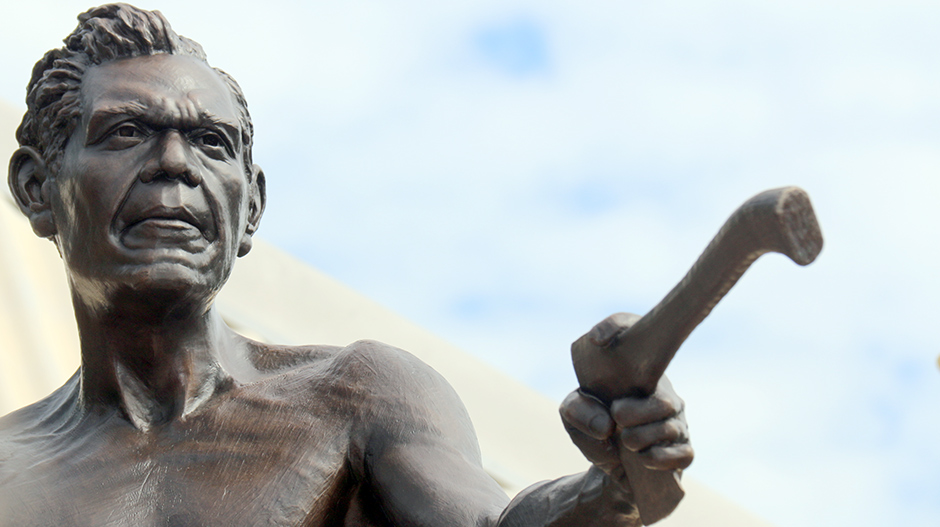
Ulungura took his prisoner to the RAAF guards stationed at the Bathurst Island aerodrome, where he was transferred into their custody. Toyoshima initially used the alias of Tadao Minami and claimed he had been washed ashore in an attempt to prevent his captors from locating his downed plane, but after questioning police saw through his story and located the wreckage. The wreckage was transferred to Darwin, and Toyoshima was taken to a prisoner of war camp, where he died in 1944 during the Cowra breakout.
Although Ulungura could not be enlisted because of his race (Australian military policy at the time forbade Indigenous Australians from enlisting), Corporal Moore, one of the two guards permanently stationed on Bathurst Island, took Ulungura on as his personal bodyguard and assistant.
Despite Ulungura's role as the first Australian to take a Japanese prisoner of war in Australia, he remains relatively unknown. Indigenous leader Mick Dodson has remarked that "the fact that an Aboriginal man took the first Japanese prisoner of war on Australian soil was hardly known in Australia.]
A life-sized bronze statue of Matthias Ulungura was erected on Bathurst Island in 2016.
